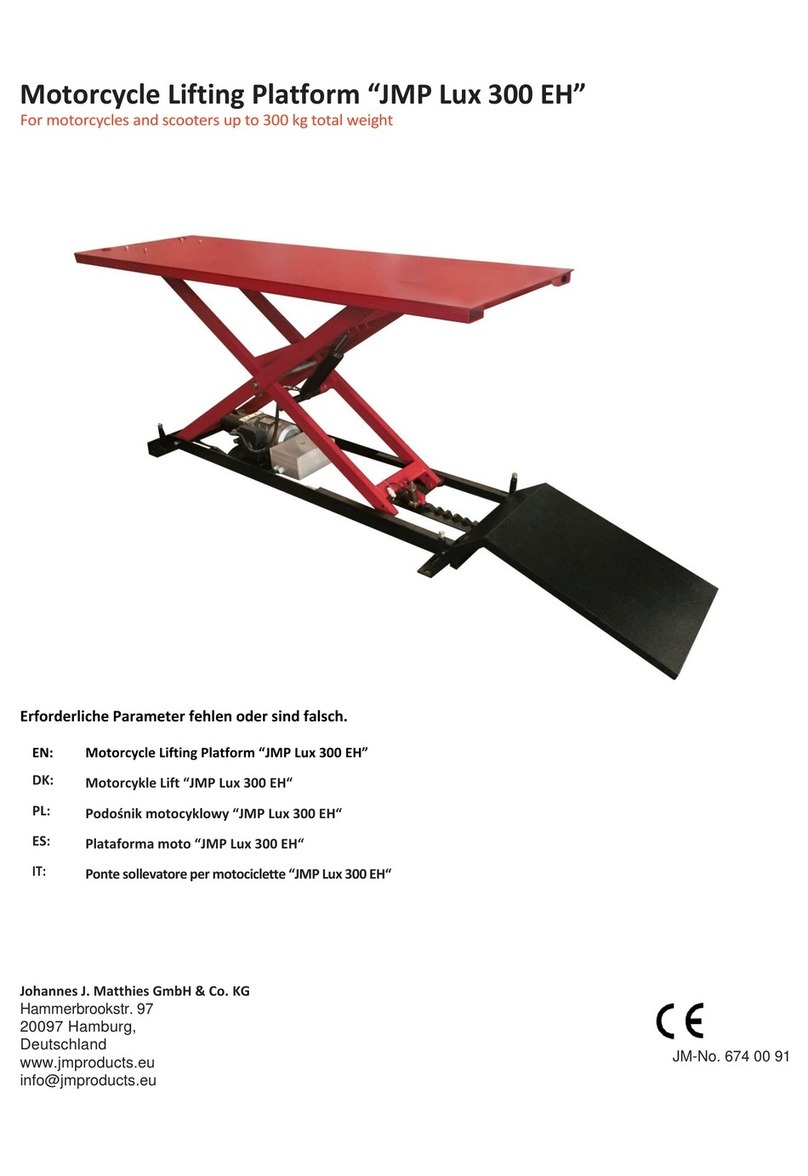
1. Introduction............................................................................................................................. 1-2
2. Installation protocol.....................................................................................................................3
3. Handover protocol ......................................................................................................................4
4. General information.....................................................................................................................5
4.1. Installation and inspection of lift...........................................................................................5
4.2. Hazard instructions ..............................................................................................................5
5. Master data sheet for lift .............................................................................................................6
5.1. Manufacturer........................................................................................................................6
5.2. Intended use ........................................................................................................................6
5.3. Construction modifications ..................................................................................................6
5.4. Change of installation location .............................................................................................6
5.5. CE mark/Declaration of Conformity......................................................................................7
6. Technical information ..................................................................................................................8
6.1. Technical data ......................................................................................................................8
6.2. Safety equipment .................................................................................................................8
6.3. Data sheets .....................................................................................................................9-10
6.4. Load distribution ................................................................................................................11
6.5. Foundation plan .................................................................................................................12
6.6. Electrical diagram and parts list .........................................................................................13
6.7. Hydraulic diagram and hydraulic parts list..........................................................................14
7. Safety regulations .....................................................................................................................15
8. Operating instructions...............................................................................................................16
8.1. Raising the vehicle .............................................................................................................17
8.2. Lowering the vehicle ..........................................................................................................17
9. Behaviour in case of malfunction ..............................................................................................18
9.1. Impacting an obstacle........................................................................................................19
9.2. Emergency lowering ..........................................................................................................19
10. Maintenance and care ..............................................................................................................20
10.1. Maintenance schedule for lift .....................................................................................20-21
10.2. Checking of lift stability ...................................................................................................22
10.3. Cleaning the lift ...............................................................................................................22
11. Safety inspection ......................................................................................................................23
12. Installation and commissioning .................................................................................................24
12.1. Installation guidelines ......................................................................................................24
12.2. Installation of column extension ......................................................................................25
12.3. Installation and anchoring of lift ......................................................................................26
12.4. Installation of crossbar ....................................................................................................27
12.5. Installation of hydraulic pump .........................................................................................28
12.6. Installation of safety catch ...............................................................................................29
12.7. Installation of covers, pipe clips and hydraulic line......................................................30-32
12.8. Installation of synchronisation cable ................................................................................33
12.9. Installation of control cabinet ..........................................................................................34
12.10. Installation of limit switch ..............................................................................................35
12.11. Installation of support arm ........................................................................................36-37
12.12. Electrical connection ................................................................................................38-43
12.13. Filling and venting of hydraulic system .....................................................................44-45
12.14. Commissioning...............................................................................................................45
12.15. Change of installation location ......................................................................................46
12.16. Dowel data sheet MKT SZ-B 18/70 (18M12) ..................................................................47
13. Non-recurring safety inspection before commissioning ............................................................48
14. Regular safety inspection and servicing ..............................................................................49-58
15. Extraordinary safety inspection ................................................................................................59
16. CE confirmation ........................................................................................................................60
Contents






























